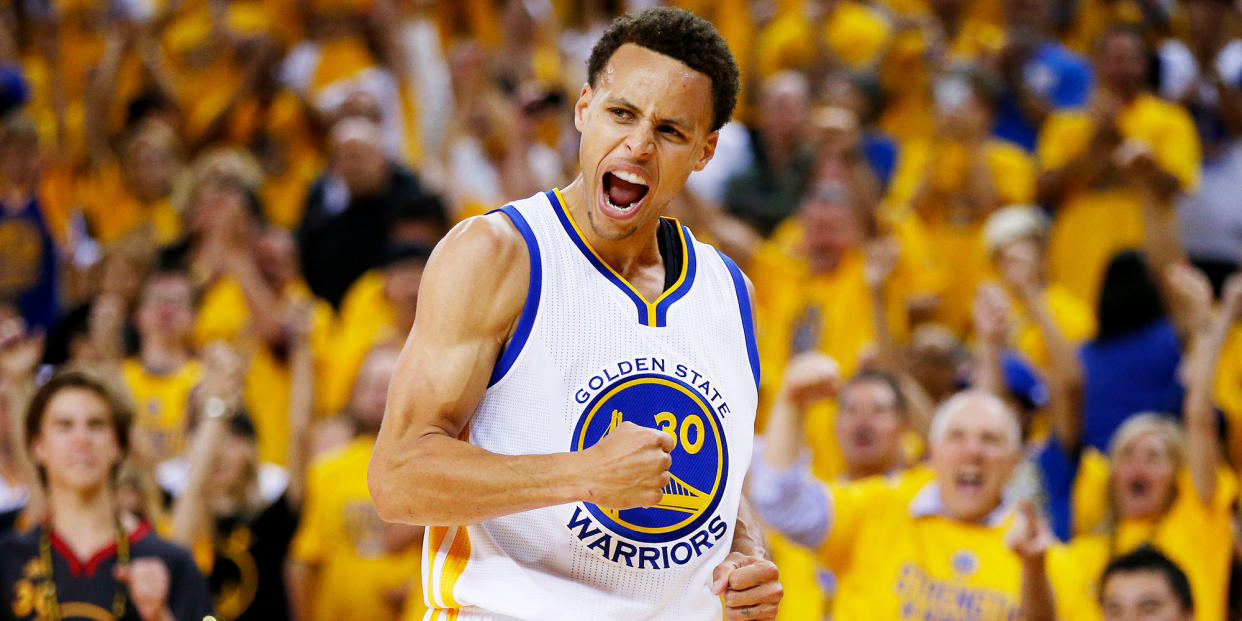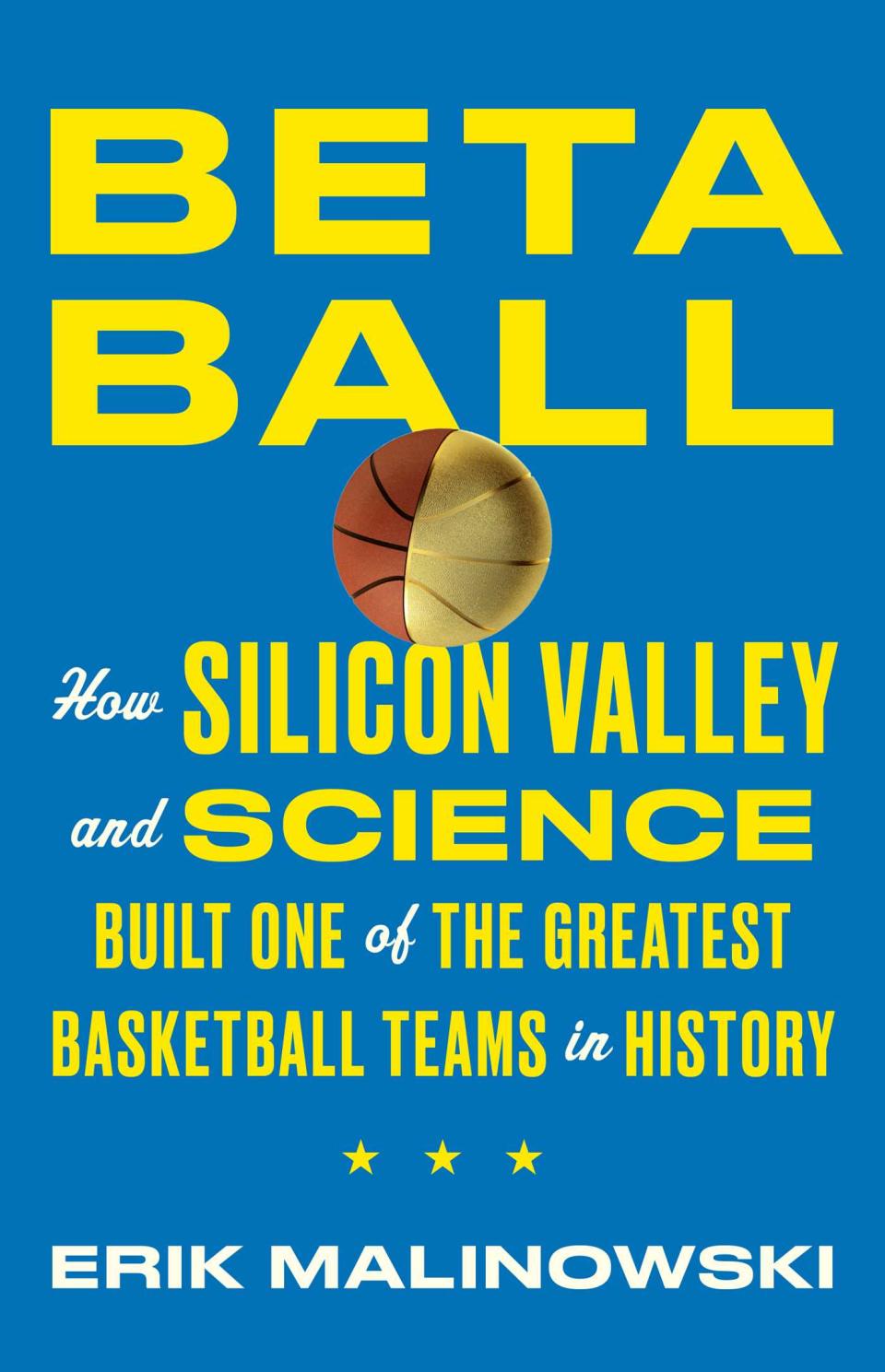How Steph Curry Became a Warrior

“His first step is average at best, and considering his skinny frame and poor explosiveness around the basket in traffic, it’s unlikely that he’ll be able to get to the free throw line anywhere near as much in the NBA as he does in college.”
That comes from the scouting report posted on DraftExpress.com - widely recognized as the leading authority in NBA Draft analysis - on February 28, 2009, with just a few games to go in Curry’s collegiate career. The follow-up assessment posted in early May was kinder, though it still concluded that Curry’s NBA prospects were, at best, “an interesting case.” The report on NBADraft.net was more scathing: “Far below NBA standard in regard to explosiveness and athleticism. . . . He’s not a natural point guard that an NBA team can rely on to run a team.” And ESPN’s Doug Gottlieb, while conceding that Curry made his teammates better, still ran down a litany of his perceived shortcomings: “Was Curry capable of blowing by defenders in college? No. Is he big enough to shoot over NBA players? No. Does he have a defined position at the NBA level? No. Can he contain the basketball? No.”

But these conclusions didn’t reflect how Larry Riley thought of Curry. He saw Curry’s flexibility between point and shooting guard fitting in perfectly with Don Nelson’s up-and-down, high-tempo offense. Riley believed Curry could be the franchise cornerstone Golden State so desperately coveted.
The Warriors couldn’t afford to screw up this pick. They had the seventh choice in the 2009 draft, thanks to a 29-53 record, and Riley, who had decades of experience as a scout and coach in both college and the NBA, was promoted to general manager after the season. This draft choice would be his first major decision as the person in charge of player personnel, and the Warriors needed lots of help.
A few weeks before the draft, Riley still hadn’t settled on anyone. He would happily take a point guard, but he also wanted to beef up the frontcourt, maybe with a physical center who could operate under the rim. Riley also thought about seniors, who were becoming increasingly rare in the draft as more players declared earlier in their collegiate careers. The Warriors had the fifth-youngest roster in the NBA, so a more polished prospect might be preferable to a “project” player who required development.
Riley felt no small amount of pressure. “A draft pick is an asset,” he said. “You’re focusing on next year and five years down the road at the same time.” At the multiteam predraft workout held in Oakland, Riley joked with reporters about the tenuous position of picking so late. “Seven - it’s a great number,” he told one. “I don’t know if it’s a great pick.”
This was not only the most important decision in Riley’s professional life but the culmination of a career that almost never happened.
Riley and his twin brother, Mike, grew up the sons of farmers in Whitewater, Indiana, harvesting corn, wheat, and soybeans while raising beef and dairy cattle. Instead of taking over the family business after high school, both boys enrolled at Chadron State College in Nebraska, an 1,100-mile drive west by car. Like their father at the University of Wyoming after the war, Larry and Mike were skilled at basketball and baseball, which they both played at CSC. Larry, who also ran cross-country, then headed for graduate school at Southeast Missouri State and coached a few seasons of high school basketball in Indiana.
He hopped from one collegiate assistant coaching job to another before getting a call from his old coach at Chadron, offering him the head coaching job. Riley took a 25 percent pay cut and headed from Mercer University in Georgia back to Nebraska. That gig led to the head coaching job at Eastern New Mexico, where Riley patrolled the sidelines for 10 seasons. While there, Riley coached two sons of Del Harris, the Milwaukee Bucks head coach who had employed his twin brother years earlier at a small Indiana college. In 1988, Harris hired Riley as a Bucks video scout. He soon became Harris’s top assistant, but in 1994 general manager Stu Jackson hired Riley to be an executive with the expansion Vancouver Grizzlies. Riley was regarded as one of the NBA’s top discerners of talent and his job took him across the country.
On January 9, 1997, Riley’s life changed in an immeasurable way. While on a scouting trip for the Grizzlies, his flight from Cincinnati to Detroit was delayed by 30-mph winds and freezing snow showers in the area. At the gate, Riley was chatting lightheartedly with other passengers, the way you do when you’re all antsy to just get home already, when he heard a voice inside his head: Go home. He brushed it off the first time, but then the voice spoke again. As a religious man, Riley would not shrug off what had just happened. He asked the gate agent to refile his ticket for back home.
When Riley deplaned for his layover at Seattle-Tacoma International Airport, he turned on his cell phone and it started ringing. Stu Jackson, his boss, was on the line, sounding panicked.

“Where are you?!?” said Jackson, before informing Riley that his original flight, Comair 3272, had crashed in whiteout conditions while flying to Detroit. All 29 souls on board were lost.
Riley still had to catch a smaller regional flight to Vancouver, but he did and made it home when, by all rights, he never should’ve been alive to do so. He hugged his daughter and wife that night, vowing to make the most of his life, to never let those closest to him down. “It reinforced my faith,” he said years later, “and reinforced that you should treat everyone as well as you can.”
In 2000, Don Nelson brought Riley aboard to the Dallas Mavericks and he spent six seasons there, mostly as an assistant coach and scout. And in August 2006, when Nelson was rehired by the Warriors as head coach, Riley followed two days later. After three years on the bench - including the “We Believe” season of 2006–07 - Riley was bumped up to the front office as Chris Mullin was let go.
As general manager, the 64-year-old Riley would run point on the Warriors’ draft strategy.
He had six weeks to prepare.
Even without the luxury of spare time, Riley was determined to take his time and do this pick right. “The worst decisions, to me, are knee-jerk reactions,” he said before the draft. “We’re not going to get into something that we haven’t had a chance to evaluate.” And yet, even as two dozen prospects went through drills at the team’s practice facility, Curry worked out neither there nor one-on-one for the Warriors. All they had to go on was a sit-down with him at the NBA Combine in Chicago less than a month before the draft, what they (and other teams) could publicly observe over those three days of drills - “Curry looked smooth, smart, and extremely talented in pretty much everything he did,” concluded one report - and, well, three years of Davidson high- light reels.
Riley had also scouted Curry in person, during his junior season when the Wildcats went to Indianapolis to play Purdue five days before Christmas. The Boilermakers were a tough foe - ranked No. 13 in the country - and Curry played awful, missing 21 of 26 shots from the floor, including 10 of 12 threes. Davidson lost by 18, but Riley left impressed with Curry’s confidence and demeanor in one of the most dreadful performances a First Team All-American could produce.
By draft day, Riley had grown slightly more optimistic that Curry could fall in Golden State’s lap at No. 7. That’s because Minnesota was sitting in front with both the No. 5 and No. 6 picks, thanks to a late trade with the Washington Wizards. (“I didn’t feel like there was anybody at the five spot who could fit into our rotation,” said Wizards general manager Ernie Grunfeld in justifying the predraft trade. “I don’t think there are any guarantees in the draft.”) That the Timberwolves would pick Spanish star Ricky Rubio with one of them felt all but certain, but the calculus was whether that selection of one young point guard then might dissuade them from looking at Curry.
Perhaps, at that point, the Timberwolves might opt for someone like Jordan Hill, a bruising power forward from Arizona. The likelihood was that the Warriors’ selection would come down to either Curry or Hill. Riley put on a brave face, but his gut told him it’d be Hill. The Warriors’ own website even had com- piled mock drafts from around the internet, thereby exciting fans by hyping potential picks such as Hill, UCLA’s Jrue Holiday, Italian import Brandon Jennings, Memphis’s Tyreke Evans, Syracuse’s Jonny Flynn, and Arizona State’s James Harden. There just seemed no conceivable way Curry would fall to No. 7.
As the Warriors’ brain trust assembled in their war room in Oakland, Curry made his way from his hotel room to the draft inside Madison Square Garden. He could feel the butterflies puttering around his stomach and knew not just that his life would be inexorably changed in a few hours but that he had no control over any of it. Riley, too, had endured a few sleepless nights himself. In short order, all would be decided, one way or another.
This is an excerpt from Erik Malinowski's BETABALL: How Silicon Valley and Science Built One of The Greatest Basketball Teams in History, available now from Atria Books.
You Might Also Like

